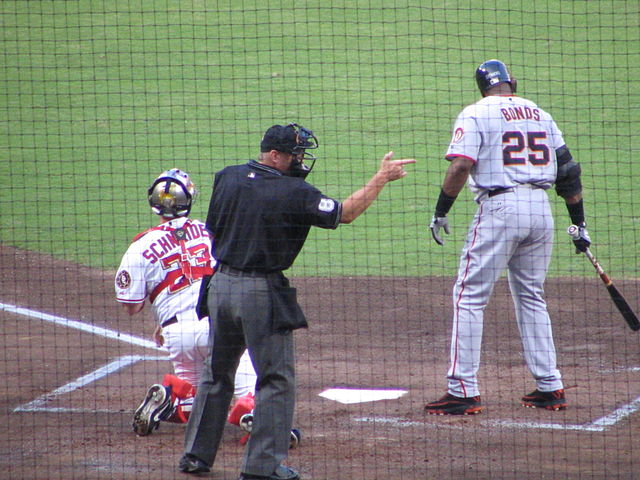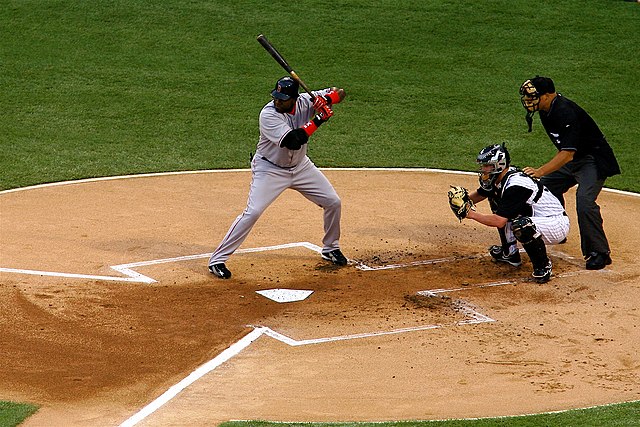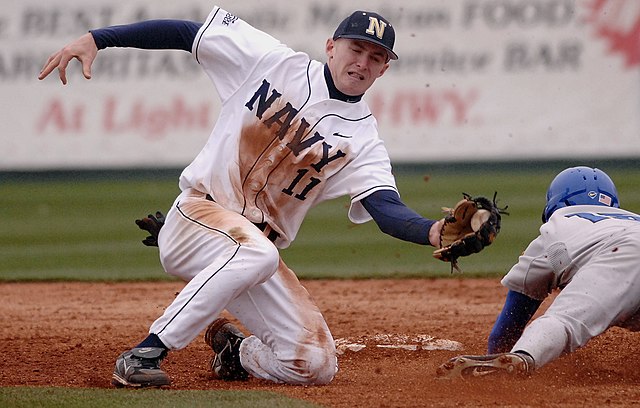In baseball, the strike zone is the volume of space through which a pitch must pass in order to be called a strike even if the batter does not swing. The strike zone is defined as the volume of space above home plate and between the batter's knees and the midpoint of their torso. Whether a pitch passes through the zone is decided by an umpire, who is generally positioned behind the catcher.
A labelled drawing of the strike zone superimposed onto an image from a game, showing a batter, catcher and umpire. The pitcher (not pictured) pitches a baseball to the catcher; the batter attempts to hit this baseball; and the umpire decides whether pitches are balls or strikes.
An umpire calling a strike on Barry Bonds (#25)
Baseball is a bat-and-ball sport played between two teams of nine players each, taking turns batting and fielding. The game occurs over the course of several plays, with each play generally beginning when a player on the fielding team, called the pitcher, throws a ball that a player on the batting team, called the batter, tries to hit with a bat. The objective of the offensive team is to hit the ball into the field of play, away from the other team's players, allowing its players to run the bases, having them advance counter-clockwise around four bases to score what are called "runs". The objective of the defensive team is to prevent batters from becoming runners, and to prevent runners' advance around the bases. A run is scored when a runner legally advances around the bases in order and touches home plate.
Los Angeles Angels center fielder Mike Trout hits a home run on a pitch from New York Mets pitcher Tommy Milone on May 21, 2017.
2013 World Baseball Classic championship match between the Dominican Republic and Puerto Rico, March 20, 2013
David Ortiz, the batter, awaiting a pitch, with the catcher and umpire
A shortstop tries to tag out a runner who is sliding head first, attempting to reach second base.






